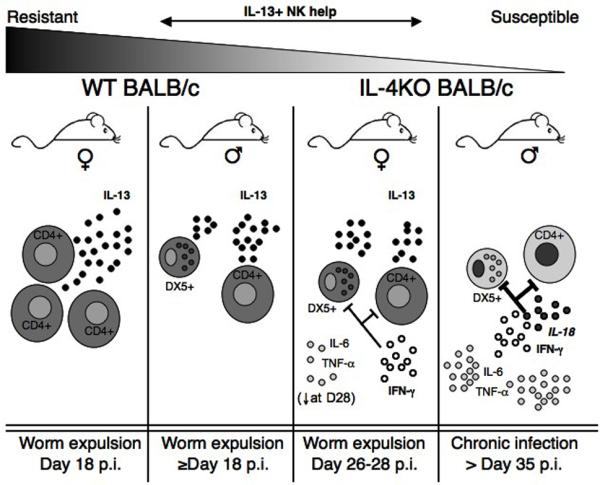Figure 7.

Host gender highlights a role for IL-13+ NK cells during the ‘gradient’ of resistance to T. muris in WT and IL-4KO BALB/c mice. Female WT mice are highly resistant to T. muris infection and expel the parasite through a fast and efficient CD4+ restricted Th2 response. Female IL-4KO mice are also resistant to T. muris despite high levels of IFN-γ, but expulsion of adult worms is delayed up to 10 days in comparison to WT females. This delayed worm expulsion is associated with both IL-13+ T cells and NK cells and a concurrent reduction of pro-inflammatory cytokine levels at day 28 p.i. Neutralisation of IFN-γ in female IL-4KO mice resulted in restored expulsion kinetics comparable with WT mice. Surprisingly, male WT mice also exhibited a delayed expulsion and also demonstrated accessory IL-13+ NK ‘help’. Conversely, Male IL-4KO BALB/c mice are completely susceptible to chronic helminth infection associated with high levels of IFN-γ, IL-6 and TNF-α. Resistance in these mice could be restored with delayed kinetics following depletion of IL-18 or fully via neutralisation of IFN-γ. This data suggests a complex interplay between host gender and the development of a successful immune responses in normal or disrupted environments.
